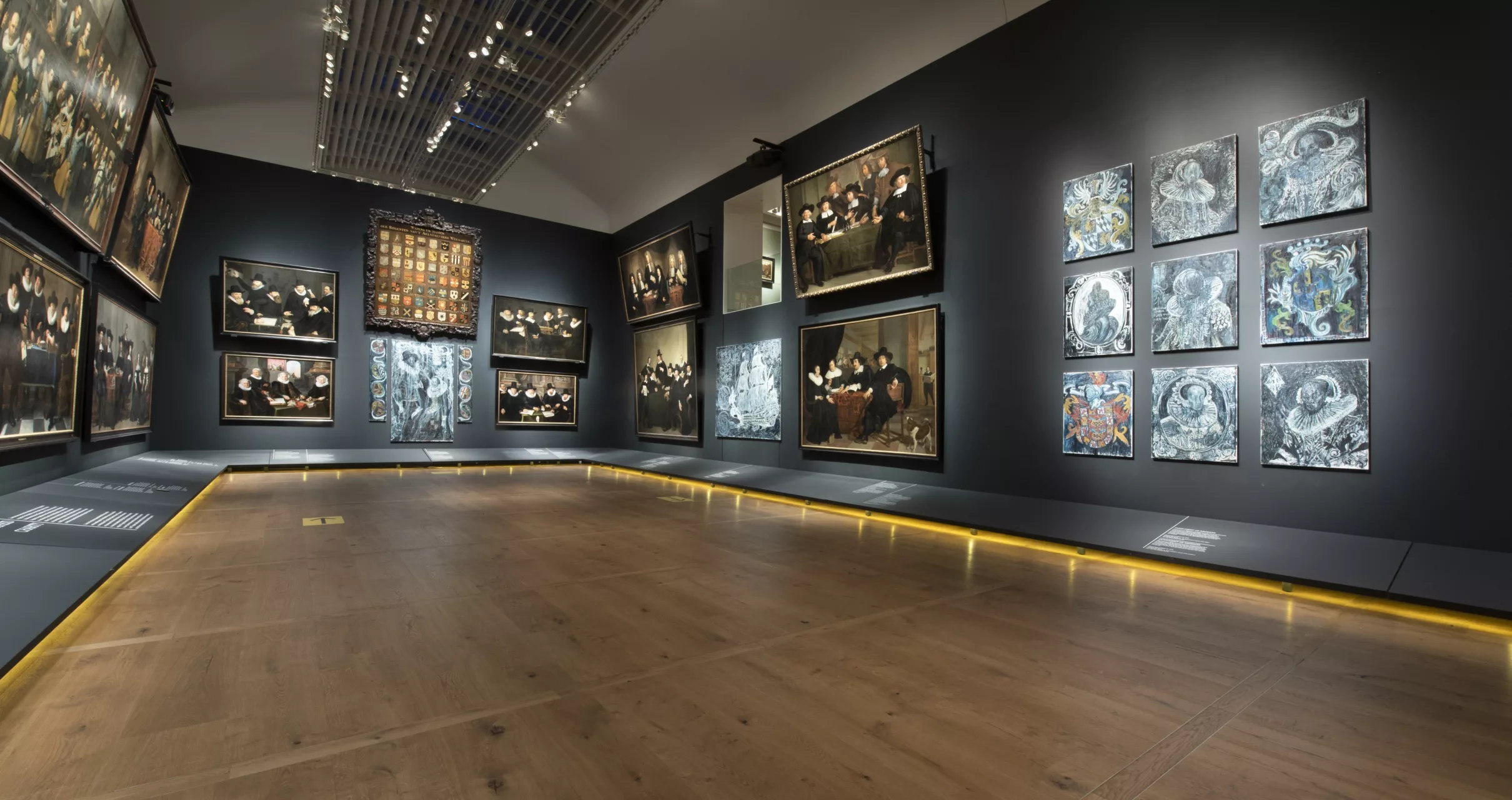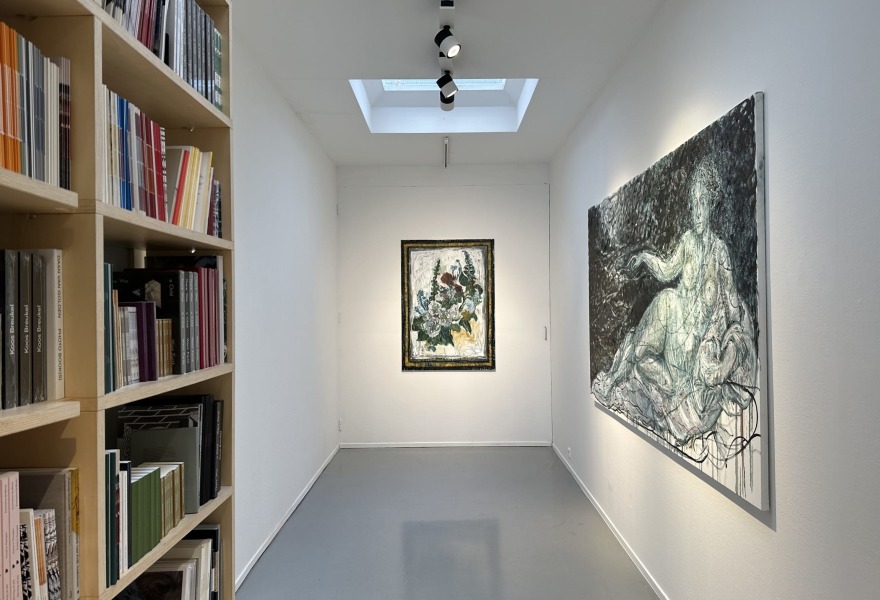14 april 2023, Flor Linckens
Natasja Kensmil and the dark sides of (art) history
Until 13 May, andriesse eyck gallery in Amsterdam is presenting a solo exhibition by Natasja Kensmil. The acclaimed artist is known for her mysterious, eerie and large-scale paintings that reflect her fascination with history, religion and mythology. But she is particularly interested in the implicit layers behind them, that say something about power relations and in a larger sense: good and evil.
Natasja Kensmil's work is based on a fact that every first-year history student is confronted with: there is no such thing as The History. Historiography is always a construct, recorded by a small and powerful group of people. Particularly since postmodernism, there has been a critical scrutiny of ways in which multiple narratives could be added to that history. Among other things, by 'queering history', by researching women's history as well as the language of history and the concept of multiple modernities: the idea that there is not one, single (AKA: the Western) route to modernity. That is also the starting point for decolonising history. Kensmil looks at (art) history in new ways in order to mediate the relationship between the present and the past. At the same time, the artist raises questions about the one-sided way in which many museum collections are still composed in 2023.

Kensmil: "Within history, I focus very much on power and violence." The artist shows that brutal violence and abuse of power are a recurring subject throughout history and that we cannot simply separate the present from the past. Kensmil's work is layered, with a dark and chaotic edge. She's inspired by the early modern religious wars, the Russian tsar family and post-mortem photography, but also by the 17th century in a broader sense —which may have been great in terms of the fields of science, art and trade, but was, at the same time, also marked by systematic exploitation, human trafficking and oppression. Kensmil rightly wonders what that glory is worth when it's at the cost of the freedom of so many.
In a conversation with Hans den Hartog Jager in the Young Collectors Circle podcast, she stated: “I am interested in those dark sides, in those aspects that you don't hear much about, those dark sides that you usually don't see. That is exactly what I want to grasp.”
At first glance, the paintings seem to contain little colour, but if you take a closer look, you often see a multitude of underlying, slumbering colours in the thick texture. Kensmil paints in countless pasty layers, resulting in dark greys, blues, greens and browns. Because the artist builds up her work in so many layers, her paintings almost become three-dimensional. Visually, they have something gruesome; the depicted persons often look like literal ghosts from the past, with hollow, soulless eyes and melting faces, as if they were metaphorical zombies.

Director Lisa Boerstra followed the artist for four years for the (Dutch) documentary Close Up: Natasja Kensmil - You want it darker. Viewers get a glimpse into her studio, which is filled with hundreds of newspaper clippings, art books and (occasionally explicit) photos of historical and contemporary rulers and events. These images help her shape her thoughts about the world, which she sometimes considers quite scary, chaotic and unpredictable — an atmosphere that is definitely reflected in her work. At the end of a working day, Kensmil turns the painting she is working on to its back, so that she is not directly confronted with it the next day. It is precisely this review process that she considers an essential part of the overall process, which she wants to deal with in a conscious way.
In the exhibition at andriesse eyck gallery, Kensmil shows a series of new works. In Les Fleurs du Mal, Kensmil plays with the infamous 'reclining nude' and in particular the so-called 'odalisque', which can be seen in the work of Ingres, Manet and Matisse, among others. The depicted woman in these paintings is an enslaved woman from an Eastern culture. By playing with this visual language — which also conceals complicated power relations — Kensmil not only considers the eroticizing male gaze, but also the exoticizing western gaze. As expected, her nudes are anything but conforming to the male and heteronormative ideal of female beauty. The title of the series refers to Charles Baudelaire's influential collection of poems from the nineteenth century, in which he, among other things, elaborates on the beauty of evil. In addition to paintings from this series, the gallery also shows a series of flower still lifes by Kensmil, which refer to the classic Vanitas. She highlights an interesting aspect: the flowers from the original 17th-century paintings often originated in the colonies and are therefore a symbol of both status and exploitation.

Kensmil studied at the Gerrit Rietveld Academy and at the Ateliers in Amsterdam and won several awards, including the Royal Prize for Free Painting (1998) and the Johannes Vermeer Prize (2021), worth 100,000 euro. Her work has been shown at the Hermitage Amsterdam (Amsterdam Museum), Stedelijk Museum Amsterdam, The Rubell Family Collection, the National Museum of Women in the Arts in Miami, the Fries Museum, the Van Abbemuseum, Kunsthal KAdE, the Royal Palace and the Nieuwe Kerk in Amsterdam, The Rembrandt House Museum and Singer Laren.
